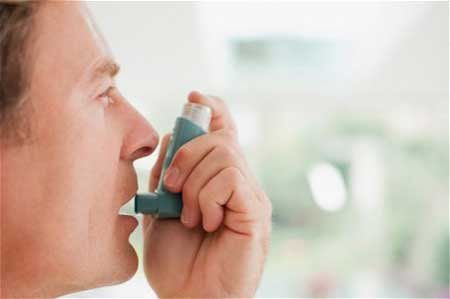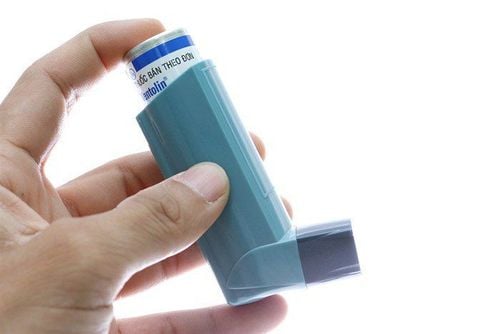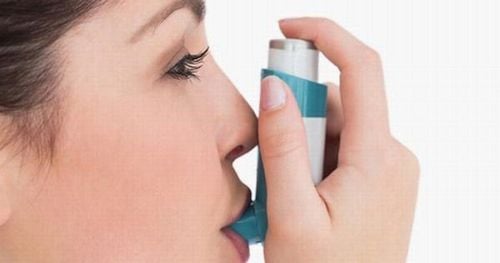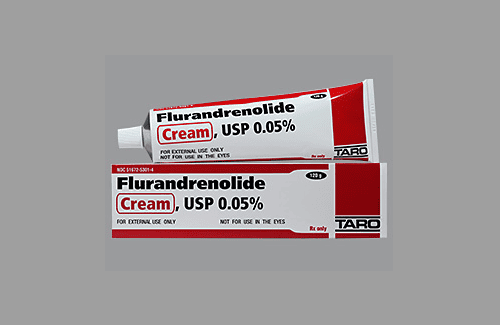This is an automatically translated article.
Occupational bronchial asthma is a disease that occurs due to the influence of allergens of animal, plant or chemical origin on people exposed during work, causing specific pathological disorders. show.
1. Occupational bronchial asthma
Occupational asthma causes serious incapacity to work for sufferers and is on the rise in our country. Some jobs have a high risk of occupational asthma such as animal husbandry, forestry, printers, paper manufacturers, jobs using detergents, exposure to platinum complexes, with toluene diisocyanate, manufacturing grain flour, vegetable oil, cosmetics, tanning, metal plating, coffee processing, pharmaceuticals, medical staff, electrical and electronic industries, spray painting, plastics...
2. Causes of occupational asthma
There are two main groups of causes of this disease, which are:
Agents with high molecular weight such as:
Products of animals, insects: encountered in workers working in labs and livestock. Labo animals: mouse, rabbit, sheep. Pigeons, chickens, farmed insects: seen in workers in labs and livestock. Plants: coffee beans, tea. Biological enzymes (trypsin, papain): soap industry, medicine. Plastic, rubber: medical staff, toy manufacturing. Botanical ceramics: ceramic maker, printmaker. Others: processing aquatic products (shrimp, crab). Low molecular weight agents:
Diisocyanate: plastic factory, paint. Anhydrite: plastic factory. Wood dust: woodworking. Metals (nickel, platinum): heavy metal technology. Drugs (penixicllin, cephalosporin, salbutamol, tetracycline): industrial, pharmaceutical. Other: formalin, hexachlorophere (for hospital use). Risk factors such as:
The patient is regularly exposed to the allergen. Smoke. Atopy... Occupational asthma is classified into occupational asthma with a latent period and occupational asthma without a latent period, including asthma caused by triggers and the syndrome of airway reactivity disorder.

Bệnh hen phế quản nghề nghiệp do yếu tố kích thích gây nên
3. Symptoms of occupational asthma
For latent-onset occupational asthma, the type seen in most patients due to low- and high-molecular-weight agents. Symptoms will appear weeks to months after the patient is exposed to the allergen, and the patient also develops symptoms and is sensitive to low concentrations to workplace agents, increased bronchial responsiveness. . In patients with occupational asthma, immediate-onset is less common, with symptoms appearing several hours after exposure to the agent. The main causative agents of the disease can be mentioned as gas, smoke causing rhinitis, atopic dermatitis ...
Patients can easily recognize occupational asthma as having difficulty wheezing, Hissing and snoring appear when working. On days off, breathing difficulty is lighter and heavier in the next working days.. Besides, the patient has rhinitis, sore throat with sputum accompanied. An asthma attack occurs within minutes of being exposed to the allergen. The disease also reduces symptoms after a few hours of stopping exposure.
In some cases, patients have severe spasms, acute respiratory failure and even death. The patient has signs of labored breathing, panic, cold sweat, respiratory pull. The typical characteristic of occupational asthma is the sound of storks and wheezing. Patients often cough a lot, with white, sticky sputum accompanied by high fever, cough with yellow sputum if the condition is severe and there is a bacterial infection.
If you have the above symptoms of occupational asthma, the patient should go to the doctor immediately and have a treatment orientation as prescribed by the doctor to avoid prolonging and causing dangerous complications.
Asthma, if not diagnosed and controlled strictly, will cause many serious consequences such as acute and malignant dyspnea, even death. Currently, Vinmec International General Hospital has Vinmec's asthma screening package to help customers:
Screening for early detection to promptly control and treat the disease Perform clinical examination, ask medical history , measure respiratory function, otolaryngology examination and screening for bronchial asthma.
If you have unusual symptoms, you should be examined and consulted with a specialist.
Please dial HOTLINE for more information or register for an appointment HERE. Download MyVinmec app to make appointments faster and to manage your bookings easily.













